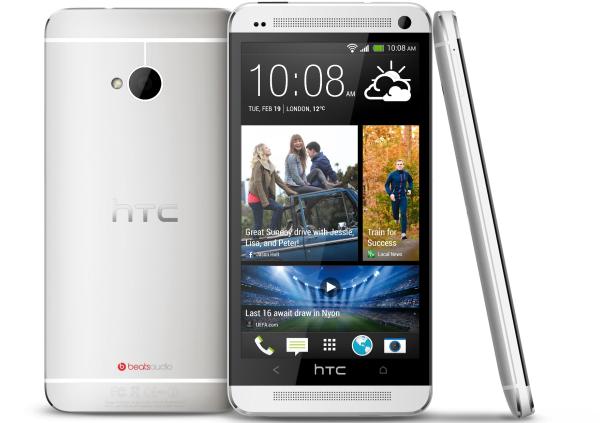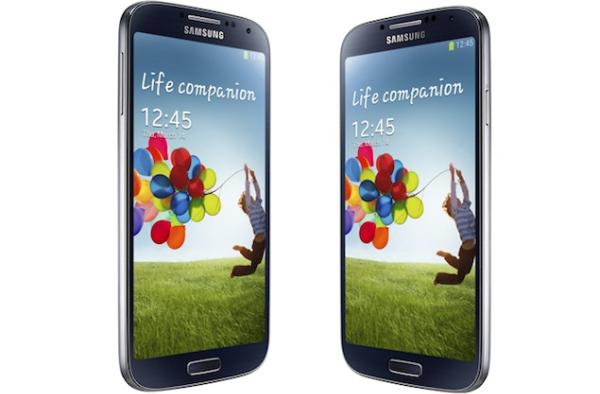In a market swarming
with competitors, it’s remarkable that Apple and Samsung are the only two
smartphone makers seeing significant profits. In some parallel universe,
perhaps the two could comfortably coexist, content with their virtual duopoly
... but there’s way too much bad blood for that. Will Samsung’s new Galaxy S4
help it to pull away? Or will the iPhone 5 stand strong after six months on the
market? Let's find out.
Size

Android flagship phones keep growing bigger, while Apple is more discerning about changing the iPhone’s size.
Do you subscribe to a “bigger is better” mentality? Or do you prefer
simplicity and “less is more?” If you lean towards the former, then your
decision is easy. The Galaxy S4 is larger than the iPhone 5 in every
dimension.
The flip side is the argument that Android phones have grown too
big, and the iPhone hits a more comfortable sweet spot. Before making a
decision, you might want to get your hands on both devices to find out
which size you prefer.
Build materials

For all of the Galaxy S4's outstanding components (as you'll see
below), its composition isn't exactly premium. It's primarily made of
the same plastic that composed the Galaxy S3. The iPhone 5 is made
primarily of anodized aluminum.
The Galaxy S3 showed that millions of customers can still fall in
love with a smartphone that's both high-end and made of plastic. But if
you're looking for a premium-feeling build, the iPhone 5 and HTC One both stand head-and-shoulders above the somewhat cheap-feeling Galaxy S4.
Weight

If you’re looking for a light phone, the iPhone 5 is still King.
Though the Galaxy S4 is a smidge lighter than the Galaxy S3, it’s still
16 percent heavier than Apple’s flagship.
The flip side to that is that an extra 18 g (0.63 oz.) of heft in the GS4 nets you significantly more screen real estate ...
Display

In addition to an extra (diagonal) inch of display real estate, the Galaxy S4 also gives you over a million extra pixels.
Will your eye notice a huge difference between 441 pixels per inch
(PPI) and 326 PPI? Probably not. But, as hardware vendors run out of
obvious selling features, pixel counts will continue to rise – whether
your eyes can discern much of a difference or not.
Pixel count aside, the S4’s bigger display inches closer towards
“phablet” territory, potentially voiding any need for a seven or 8-inch
tablet. It’s harder to argue that the iPhone’s 4-inch display could
substitute for an iPad mini’s 7.9-inch screen.
Processor

On paper – and likely in benchmarks – both versions of the Galaxy S4 beat the iPhone hands-down in a CPU showdown.
In terms of experience, though, it’s harder to see this making a dramatic difference. How many iOS apps push the iPhone 4S’
A5 chip to its limits – much less the iPhone 5’s A6? Apple’s
vertically-integrated model (creating both the hardware and software)
may deem more cores and faster clock speeds somewhat less relevant than
on Android phones like the Galaxy S4.
RAM

Another encouraging sign for the Galaxy S4, as its 2 GB of random-access memory (RAM) double the iPhone’s 1 GB.
Storage

Apart from the Galaxy S4’s microSD card (expandable to 64 GB), storage options are even.
Wireless

In regions where 4G LTE is available, both phones should support it.
Samsung will sell a separate GS4 model that maxes out at HSPA+ speeds
(relatively fast, but not LTE fast) in select regions. The iPhone 5
will also default to HSPA+ if LTE isn’t available.
Battery

Here’s another category where the Galaxy S4 looks great on paper. But
you can’t take battery capacity as an absolute indicator of actual
uptime – especially when the S4’s battery is powering a display with
more than one million extra pixels.
Apple estimates eight hours of talk or internet uptime for the iPhone
5. We’ll have to wait for some hands-on time with GS4 before drawing
conclusions about its battery life.
Cameras

In high-end smartphones, 2013 is shaping up to be the year of the
13-megapixel camera. It’s possible Apple will join that club with the iPhone 5S, but, in the meantime, the iPhone 5’s rear shooter represents 2012’s defining benchmark of 8 megapixels.
Samsung is heavily pushing its software-based camera features in
Galaxy S4. These include Dual Camera (it simultaneously snaps shots and
videos with both cameras and lets you imprint one inside the other),
Drama Shot (a burst mode that combines the images into a collage), and
Sound & Shot (records an audio clip along with still shots).
Intangibles

The Galaxy S4 runs Android 4.2.2 Jellybean – and includes Google’s
apps like the Play Store, Gmail, and Google Maps – but this green robot
is hiding under a big honkin’ layer of Samsung. The company is trying to
differentiate its software from its fellow Android handsets (and
perhaps paving the road for a shift to Tizen or an Amazon-esque forked version of Android).
Some of the S4’s new software features sound promising. S Translate
could help you to communicate in foreign tongues on the fly (though
there are third party apps that already do this). If S Voice (Samsung's
answer to Siri) is improved, it could prove valuable – particularly in
its new S Voice Drive car mode.
The value of other features, however, is more questionable. Adding
audio clips to your still photos? Scrolling through web pages and emails
via facial recognition? Browsing through photos with mid-air gestures?
There’s a fine line between inventing something that’s truly
game-changing, and simply cramming in as many “new features” as
possible. Is Samsung toeing that line a bit too closely?
... which brings us to those zen-like balancing stones (pictured
above). Apple treats simplicity like a religion, and the company has
followed it to a T with iOS and the iPhone. While Android and Samsung
try to evolve as quickly as possible, iOS has only changed incrementally
since the first iPhone in 2007.
Each approach has advantages and disadvantages. The Samsung angle may
mean beating Apple to the punch on some important features, but it
might also mean growing bloated with confusing, extraneous crap. Apple’s
angle, on the other hand, might be too minimalistic for some customers: primitive, childlike, and unchanging.
Maybe one approach isn’t more “right” than the other, and it’s up to
you to decide which better suits you. After all, with just two companies
standing atop the smartphone mountain, there should be plenty of room
for more than one approach.
via Gizmag.com

